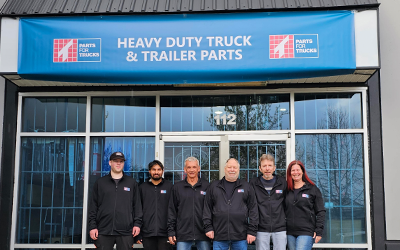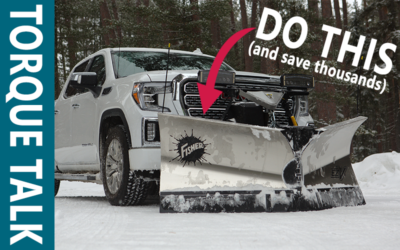Cracking the Code: Avoiding Drum Damage Due to Pilot Error
By: Parts for Trucks

Drum manufacturers create distinct pilot chamfers at the points where the drum connects to the hub. If corrosion accumulates behind the chamfer marked as ‘X,’ and a drum with a smaller chamfer denoted as ‘Y’ is installed without first addressing the corrosion on the hub, the drum’s mounting flange may fracture during the torqueing process. Therefore, it is imperative to use a scraper to eliminate the corrosion from the hub prior to installing a new drum.
Cleaning an iron hub involves using a scraper and/or a wire brush to effectively remove the corrosion. Conversely, addressing corrosion on an aluminum hub is a more complex task but equally crucial. It is highly advisable to reach out to the manufacturer of the aluminum hub to acquire guidance on the proper methods for dealing with oxidation and corrosion.

In conclusion, meticulous care and attention to detail when dealing with corrosion on drum and hub interfaces are paramount to ensure the safety and longevity of your brake system. While cleaning corrosion from an iron hub can be accomplished with the use of a scraper or wire brush, addressing corrosion on an aluminum hub requires a more specialized approach.
Failure to take these steps seriously can have significant consequences, including the potential voiding of warranties on brake drums. It’s essential to remember that the integrity of your braking system depends on the health of these surfaces, and overlooking proper maintenance can compromise not only your safety but also the longevity of your braking components. So, always prioritize the cleaning of these critical areas, ensuring your brake drums continue to perform optimally and securely.
Belts Don’t Last Forever
Proactive belt inspections prevent downtime. Choose the right fan belt for seamless, reliable vehicle performance.
Parts for Trucks Inc. announces acquisition of Trailine Trailer Parts in Surrey, BC.
Hey Vancouver (well Surrey technically), meet Parts for Trucks!
Mistakes EVERYONE Makes when Putting Away their Fisher Equipment for the Summer
If you’re tired of dealing with rusted components or damaged belts when you take out your plow after a long summer of storage, this video is for you. Don’t make the same mistakes as everyone else.





